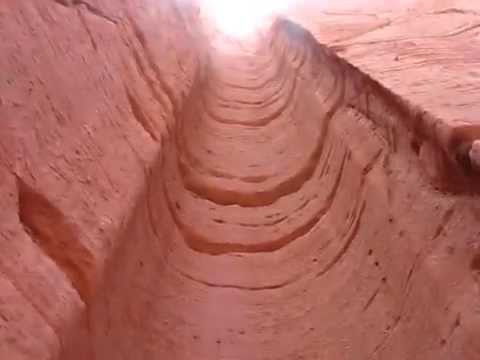Erosion is defined as wearing away of the surface of the earth, a process which is carried on by various agents. The effect of erosion is seen in the various features of the earth’s surface, as rivers. valleys, gorges and the shapes of cliffs and rocks. Water in various forms rivers,streams, rain, frost and glaciers are the great cause of erosion.

Erosion is also known as the geographical cycle , which encompasses the changes that undergoes through the action of different agents. It deals with the process of wear of the parent rock by exogenous geological processes. These processes that cause erosion can be wind, water currents, temperature changes and action of living beings. This means that animals can cause erosion by eating grass.
Rain wears away the surface of the rocks, both by beating on them and by chemical processes. Frost is instrumental in splitting the rocks to pieces, and in causing fissures in them; the sea wears away the bases of cliffs, thus causing the I overhanging rock to give way, and altering from time to time the shape of the coast-line.
Types of erosion
In natural sciences , there are different types of erosion according to their characteristics.
Water Erosion
Water erosion encompasses by the action of water as an erosive agent and has its main factor is rainfall (rainwater ). We can verify its action mainly in the drawing of the riverbeds and deltas in the formation of valleys, lakes and waterfalls, but also in the creation of canyons, grottos and caverns, due to groundwater currents in the regions with soils of calcareous composition.
In the coastal regions, the chemical characteristics of water vary and its corrosive capacity increases considerably. This type of erosion is known asmarine . The salt water, the waves, the tides and the materials that it sets in motion are responsible for drawing the profile of our coasts, producing cliffs and modeling our beaches. At the submarine level , due to the interior currents of the seas and oceans, erosion also fulfills its role as a molder of the earth’s crust.
Also, in the colder regions, we find glacial erosion , caused by the movement of the masses of ice that wear and polish the rocks with which they come into contact. They originate valleys of very steep slopes (in the form of U), as well as in the coastal regions they produce the so-called fjords .
Eolic Erosion
The wind erosion refers to wear processes and modifying the surface, caused by the wind action.It drags sand and other solid materials with it, and by rubbing it, it wears out and polishes the rocks it finds in its path. It is essential in desert regions and coastal areas.
Biological Erosion
It is caused by plants and animals. The roots of the plants produce extraction of substrates, altering the soil, like the small plants. The animals produce alterations of the vegetation, either by excavations or by the passage of large herds through the land. The worms also produce a change in the earth, aerating the soil and thus allowing its interaction with water and air.
Influence of the human being
Human activities can strongly influence the erosion process, with activities such as deforestation, road construction and urbanization, which accelerate it. Many of the so-called natural catastrophes, such as floods, landslides or floods, have their origin in human actions that have measured their possible consequences.
